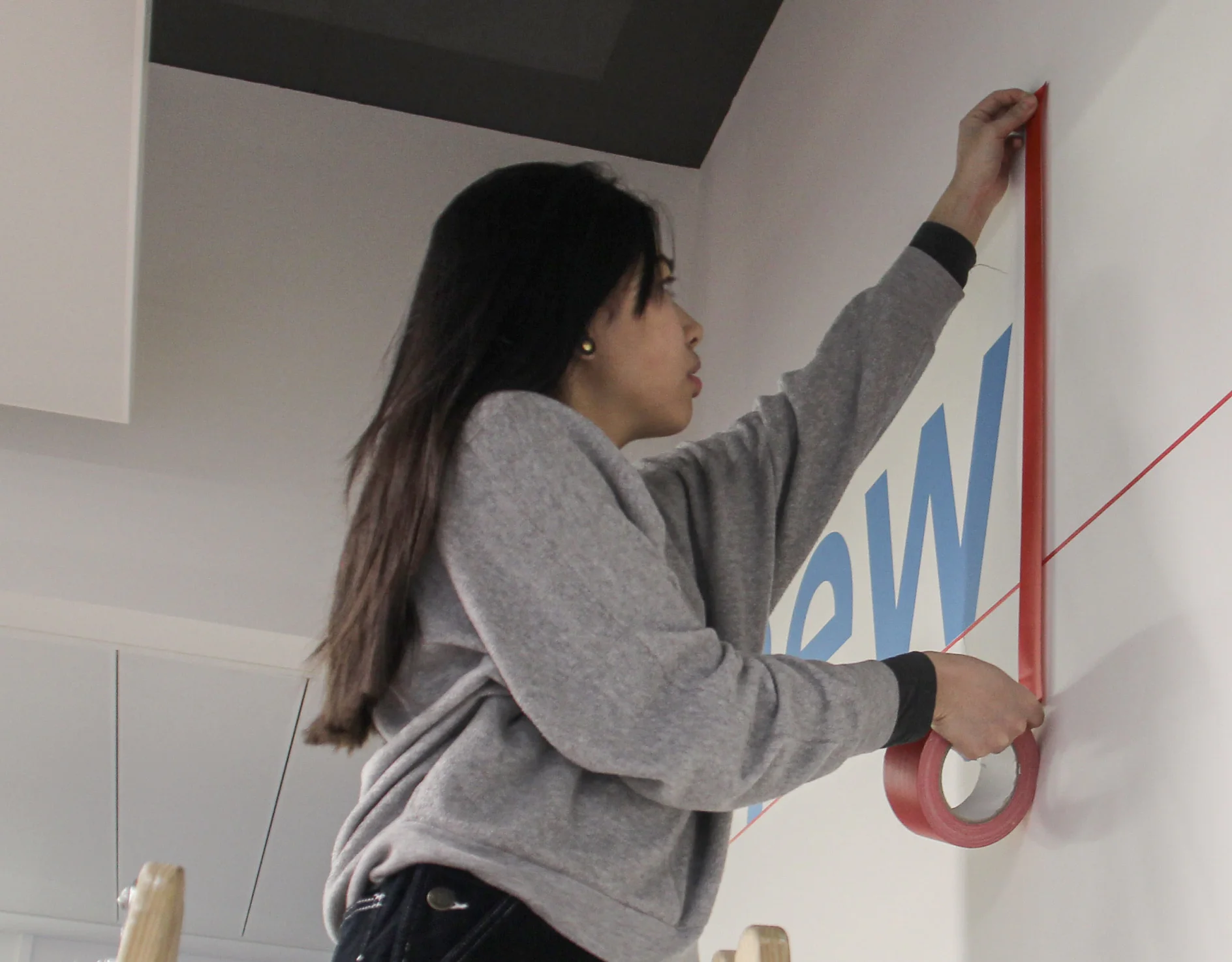Tape Art was launched in the 1960s as an alternative to spraying. Originally, ‘painting’ with adhesive tapes was practiced in urban areas. The advantages compared to the use of aerosol cans are evident: Adhesive tapes can be applied quickly and easily without creating dangerous vapors. That’s good for the health of the artist. And: Tapes can be easily applied on different materials, such as stone, asphalt, wood, aluminum Dibond or glass, and usually removed again without leaving any residue. That makes the surface happy. Furthermore, protective measures such as masking or covering are not necessary.
Technologies
Late at night, they creep across the city. With hoods pulled low over their faces, they take out their spray cans – and get going. For many years, the former subculture of graffiti sprayers has developed into a highly regarded art movement. And they’re challenged by the powerful competition from “tape artists”. The crew ‘Tape Over’ from Berlin recently went to work at the tesa Headquarter – in daylight, and quite legally.
A joint work by Berlin graffiti writer Veysel Önder, known in the scene as Amok, and the international tape art artists group Tape Over on a wall directly in front of the Klebeland in Berlin.
For about ten years now, the work of tape artists has been attracting a great deal of media attention: Among others, the Berlin artist ‘El Bocho’ caused a sensation in 2009 by completely redesigning the wall of the Stadtbad Wedding with adhesive tapes, as part of the exhibition “Urban Affairs Extended”. In early 2015, the Heyne Kunst Fabrik in Offenbach am Main opened Europe’s first group exhibition. Works by seven European tape artists and two collectives were showcased. In October 2016, the first international Tape Art Convention took place in the gallery “Neurotitan” in Berlin. Next to the German team ‘Tape That’, many other well-known international artists, such as Buff Diss, Slava Ostap, Benjamin Murphy, and Max Zorn, participated in the event.
A work of art made of brown parcel tape by Slava Ostap, who belongs to the Berlin-based artists’ collective Selfmadecrew. The work was a contribution to the exhibition “The Haus-Berlin Art Bang”.
by Tape Over Berlin, measuring 4 x 7 meters, sticks to a wall in the Chinese metropolis Beijing.

At the beginning of 2020, Enni from Tape Over Berlin taped a mural for tesa at its Headquarters. Its look is based on the company’s Hanseatic origins.
Tape Over
The international tape art group is based in Berlin. In 2011 the artists first started to tape their artworks in electro clubs. Their style combines elements of street art with urban art and is characterized by versatility and fine details.
Where else if not here?
In the “epicenter” of adhesive technology, the tesa Headquarter in Norderstedt near Hamburg, a tape art creation found its ideal location at the beginning of the year. The art concept in the communication areas and meeting rooms, which has existed since 2015, has now been expanded to include a motif by the tape artist Enni from ‘Tape Over’ Berlin. There are many ways to communicate important messages. As shown by various scientific studies, a combination of strong visual stimuli and reduced text is remembered particularly well. “Something for the eye”, mainly created with tesa tapes, forms the bridge from art to strategic communication. Thus, ‘Tape Over’ has succeeded in designing a sophisticated work of art with great symbolism.
The mural consists of about 18 rolls of tesa tape from different application areas and was completed in a total of 18 hours. By the way: This was not Enni’s first assignment in the company. The artist had already taken on another job for tesa Marketing in mid-2019.